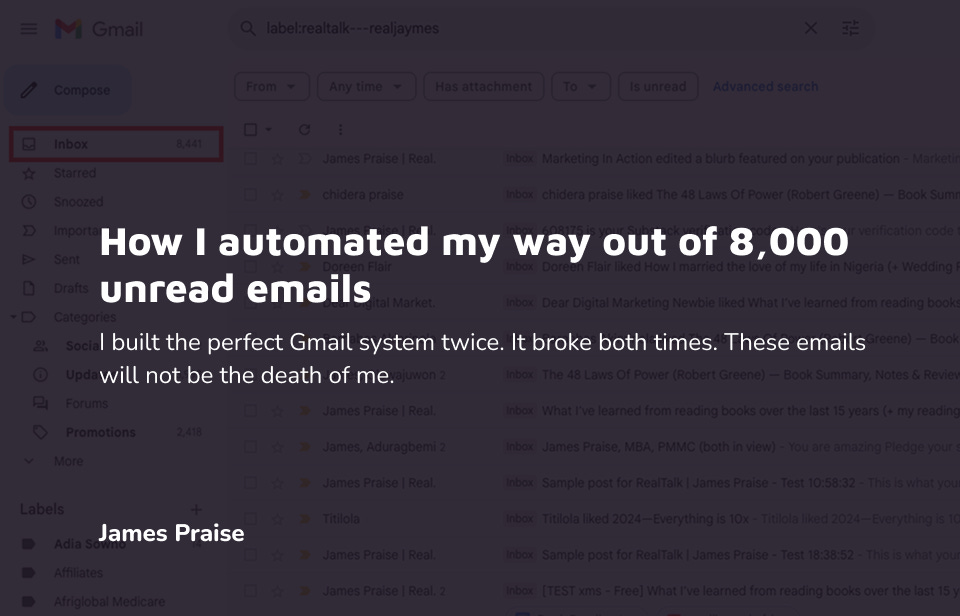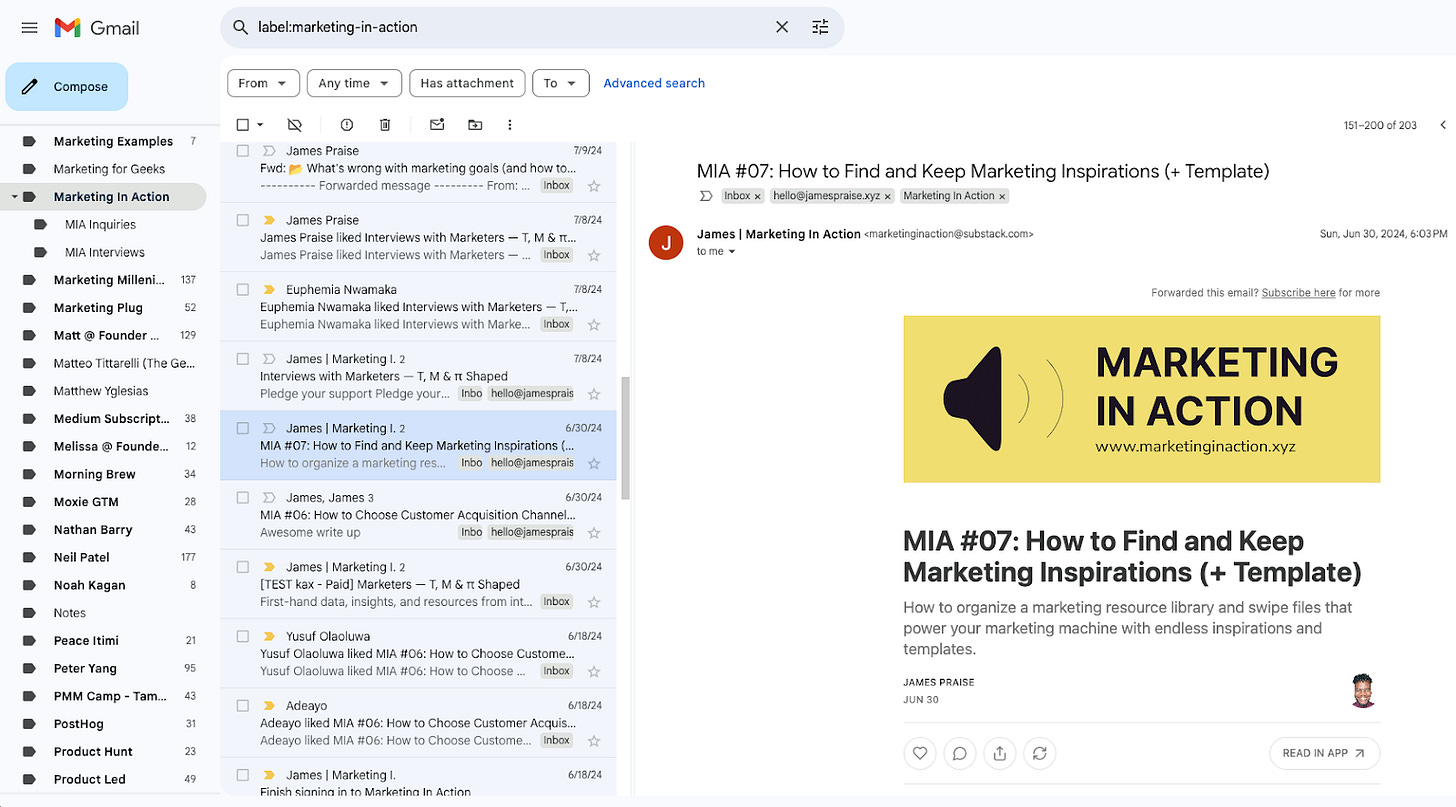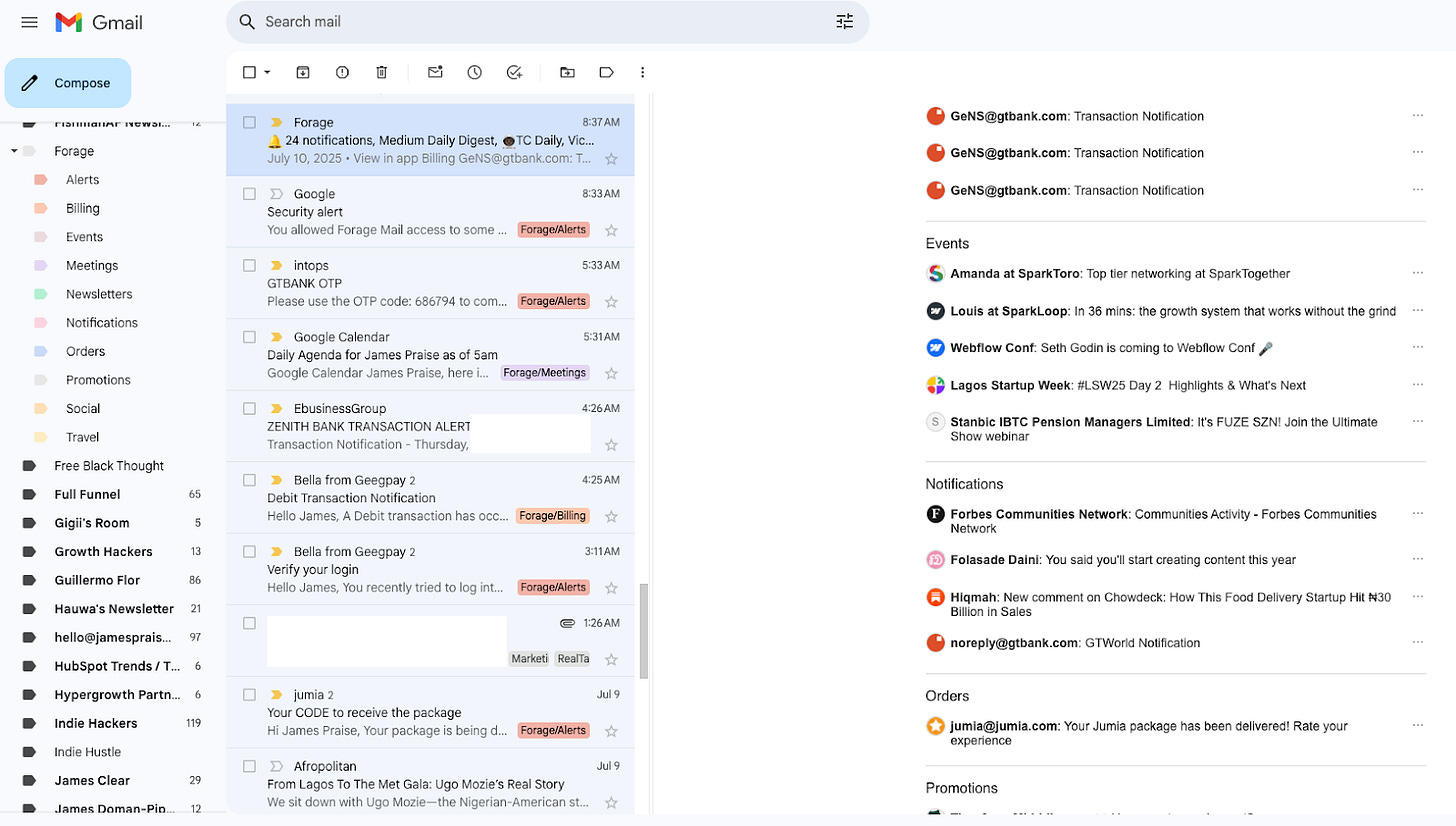How I automated my way out of 8,000 unread emails
I built the perfect Gmail system twice. It broke both times. These emails will not be the death of me.

8,441 unread emails.
It’s not a typo. I had eight thousand, four hundred and forty-one unread emails sitting in my Gmail inbox, mocking me every time I opened Gmail.
This is not because I'm lazy or disorganized. I'm just a marketer who's subscribed to everything—newsletters, tool updates, course materials, industry reports—and my inbox became a digital graveyard where important emails get buried under the noise.
I'd tried everything. Labels, filters, folders, Gmail's priority inbox, even the dreaded "mark all as read" nuclear option, but nothing seems to work. The emails kept coming, and I kept missing the important ones.
Sound familiar?
These emails will not be the death of me.
About a year ago, I missed a time-sensitive email from a potential client. Not because I was ignoring my inbox—I was drowning in it. The email was buried somewhere between 47 newsletter subscriptions, thousands of social media updates, and endless promotional emails from tools I'd tried once and forgotten about.
That's when I decided that I needed a solution to declutter my Gmail inbox and prioritize what really matters.
I went on to build a system with Gmail labels and filters. I created labels for the newsletters, people, and tools I do want to hear from.
I also set filter rules to:
auto-label emails from specific senders
skip inbox for low-priority newsletters
star emails with certain keywords
auto-archive promotional emails
This helped me to identify which subscriptions and senders are deliberate and valuable.
This setup worked perfectly... but then, life got busy. As new senders started emailing me, I found it unsustainable to keep adding new labels or updating my filters. The system became largely maintenance-heavy and wasn't as productive as I'd anticipated.
The issue is that this setup works great for static content, such as saving marketing campaigns, newsletters, and trends you want to catch up on later. However, email is dynamic—it never stops coming. Manual systems break down when you're dealing with 100+ emails daily.
Where is the lord god of AI agents?
While researching email management tools, I discovered Forage—an AI-powered Gmail extension that essentially automates everything I was trying to do manually.
Here's what caught my attention: Forage doesn't replace the Gmail interface. It works behind the scenes, using AI to automatically sort and categorize your emails to only show you what matters.
It also learns your email patterns without you having to set up complex filters for every new sender.
I took Forage for a 7-day spin, and so far, here’s how it has helped.
I tried the Deep Clean feature to help me declutter my 8,441 email inbox. It listed all my email senders based on how recently they have sent me an email, and I could decide the next action to take:
Archive – Removes all emails from the current list of senders from my inbox.
Unsubscribe – Removes all emails from the sender, and prevents future emails from them.
Don’t Archive – Leaves all emails from the sender in my inbox.
Forage also sends me a daily summary of low-priority emails by 8:00 am. This way, I can quickly skim everything it filters from my inbox and read summaries of my newsletters.
If you're like me and want to automate the repetitive, time-consuming full-time job of drowning in thousands of emails, you should try Forage and let me know what you think.
I also did a deep dive into the Forage product on my marketing newsletter. Have a look.





